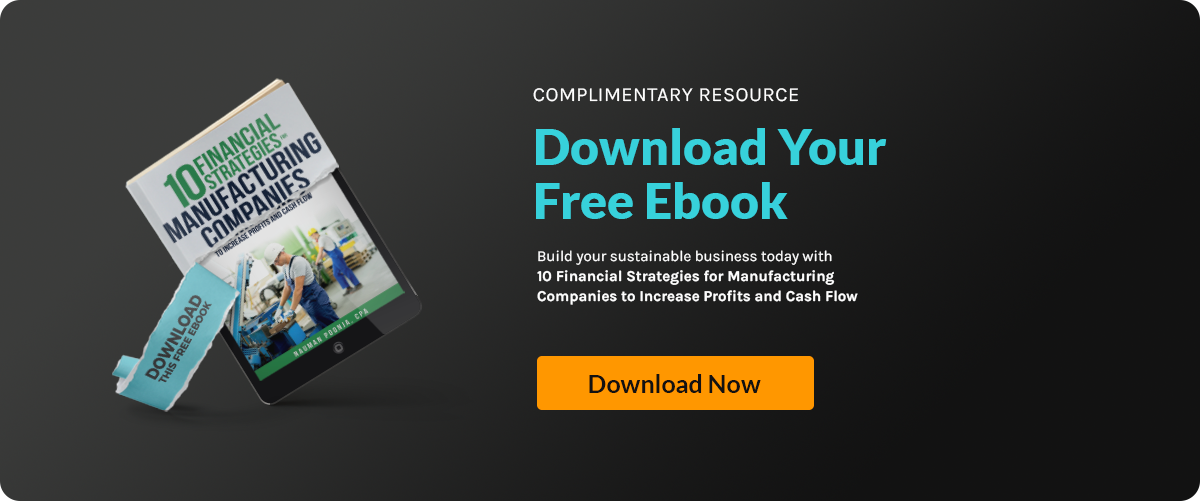Margin analysis is more than just a number on a spreadsheet. For manufacturers, it’s a powerful...
The Role of Standard Costing in Manufacturing

Manufacturers today face rising costs, supply chain disruptions, and unpredictable demand. Questions like “How can we control production costs?” or “Why do actual costs differ from projections?” are common pain points in the industry.
Standard costing, used by 77% of manufacturing companies, offers a proven solution. This approach helps establish cost benchmarks, monitor variances, and uncover inefficiencies. By mastering standard costing, you can strengthen cost control, streamline operations, and boost profitability.
In this article, we’ll explore how standard costing works, its link to actual costs, and its impact on your budget, providing actionable insights to tackle your challenges and achieve financial success.
Understanding Standard Costing in Manufacturing
Standard costing is a vital concept in the manufacturing industry, helping businesses manage budgets, control production expenses, and streamline operations. By setting a standard cost system, companies estimate expected expenses for materials, labor, and overhead using historical data and industry benchmarks. This predefined framework enables manufacturers to anticipate costs and allocate resources more effectively, laying the foundation for efficient operations.
At its core, standard costs represent what it should cost to make a product—essentially, management’s most precise estimate of the dollars required for each component of production.
Standard costs often go by several other names in manufacturing and accounting circles. You might also hear them referred to as:
- Planned costs
- Budgeted costs
- Expected costs
- Benchmark costs
- “Should-be” costs
No matter which label is used, each term reflects the same core idea: these figures represent management’s best estimate of what production inputs ought to cost under efficient operating conditions.
- $60 for materials (such as cardboard, plastic, or steel)
- $20 for labor (workers directly involved in production)
- $20 for overhead (covering expenses like plant maintenance, shipping, receiving, and plant management) These estimates serve as a benchmark for the entire production process.
Fixed Manufacturing Overhead vs. Variable Overhead
When it comes to understanding the full cost of producing goods, it’s crucial to distinguish between fixed manufacturing overhead and variable overhead.
Fixed manufacturing overhead represents those production costs that remain constant—regardless of how much you produce. Think of expenses like factory rent, property taxes, depreciation on equipment, and salaries for plant managers. Whether your team cranks out 10,000 aprons or only 1,000, these costs don’t budge; they’re the ever-present baseline expenses necessary to keep your operations running.
By contrast, variable overhead fluctuates in direct proportion to your production volume. This includes costs such as indirect materials (like cleaning supplies used in the plant), utilities tied to machine usage, and hourly wages for temporary production staff. If production ramps up, variable overhead rises accordingly; if output slows, this category shrinks.
To ensure each product reflects its fair share of total expenses, manufacturers allocate fixed overhead across all units produced. This process—often called “absorption costing”—means every apron, toy, or gadget rolling off the line absorbs a portion of these fixed costs. The allocation typically uses a logical driver, like direct labor hours or machine hours, to spread these costs across each unit.
Understanding the difference between fixed and variable overhead is essential for accurate standard costing, better cost control, and ultimately, more informed pricing and budgeting decisions.
How Is the Standard Cost of Variable Manufacturing Overhead Determined?
Variable manufacturing overhead includes costs that rise and fall with production—like electricity, indirect materials, or maintenance.
The standard cost is estimated per direct labor hour or production unit using:
-
Historical data on utilities and consumables.
-
Division of total expected overhead by the chosen activity base to set a standard rate (e.g., $2 per labor hour).
-
Multiplication of this rate by standard labor hours for the output to get total variable overhead.
Comparing actual to standard costs reveals efficiency variances.
What Is a Predetermined Fixed Manufacturing Overhead Rate?
A predetermined overhead rate allocates fixed costs—like rent, insurance, and supervisor salaries—consistently throughout the year.
Steps:
-
Estimate total annual fixed overhead.
-
Project total labor or machine hours.
-
Divide overhead by hours to get the rate.
This ensures smoother budgeting, accurate pricing, and stable cost control across fluctuating production volumes.
Key Inventory Accounts in Standard Costing
-
Raw Materials Inventory – cost of materials not yet used.
-
Work-in-Process (WIP) Inventory – costs of partially completed goods.
-
Finished Goods Inventory – total cost of completed products.
These accounts track costs and variances between standard and actual performance.
Direct Materials Usage Variance = (Standard Quantity − Actual Quantity) × Standard Cost.
Favorable or unfavorable results pinpoint efficiency or waste.
How Variable Manufacturing Overhead Costs Are Recorded
-
Record actual overhead:
-
Debit Manufacturing Overhead
-
Credit Accounts Payable/Cash
-
-
Apply standard overhead:
-
Debit Work in Process
-
Credit Manufacturing Overhead
-
If applied < actual → underapplied overhead.
If applied > actual → overapplied overhead.
Monitoring these helps identify production inefficiencies and improve cost control.
Why Standard Costing Is Often Misunderstood
Despite its widespread use, standard costing is often a source of confusion for manufacturers—largely because of the gap between theoretical definitions and practical application. Many leaders understand what standard costing is, but translating those numbers from reports into meaningful action can be challenging. What does a variance actually reveal about your operations? If profits start to dip, how do you tie back the numbers in your financial statements to specific issues on the production floor?
A frequent area of confusion lies in defining exactly which costs should be included. Standard costing should focus on direct materials, direct labor, and manufacturing overhead—costs that are directly traceable to production. However, it’s common to see companies mistakenly include expenses like sales salaries or delivery fees as part of standard costs. While these are important for broader financial analysis, they don’t belong in the calculation of manufacturing cost standards.
Avoiding these pitfalls starts with a clear understanding of which expenses drive your production process and recognizing that standard costing is designed to measure and manage manufacturing performance—not every cost in the business. This clarity will help you draw useful insights and make targeted improvements, rather than muddying the waters with unrelated expenses.
How Standard Costing Shapes Your Manufacturing Cost Budget
In manufacturing, controlling costs is essential for profitability and efficiency. Standard costing plays a key role in shaping your manufacturing cost budget, offering a structured framework for accurate budgeting, resource allocation, and financial planning. Here’s how it drives better cost management and decision-making.
The Role of Standard Costs in Manufacturing Cost Budgeting
Standard costs form the foundation of an effective manufacturing cost budget. They enable manufacturers to forecast expenses, allocate resources efficiently, and set realistic goals. This ensures that budgets align with operational capacities and actual production costs, creating a clear path to profitability.
Using Variances to Improve Manufacturing Cost Budget
Standard cost accounting highlights variances between expected and actual costs, providing critical insights:
- Unfavorable Variance: Signals higher-than-expected expenses, requiring adjustments to the manufacturing cost budget or processes.
- Favorable Variance: Reflects cost savings and operational efficiency.
By regularly analyzing variances, manufacturers can refine their manufacturing cost budget, optimize operations, and make informed decisions, ensuring flexibility and long-term success.
Understanding Absorption and Its Impact on Cost Budgets
Another key concept in standard costing is absorption. Absorption refers to the ongoing measurement of how closely your actual material, labor, and overhead expenses align with your standard costs for a given period.
For example, suppose your actual spend on materials, labor, and overhead totals $1.3 million, but your standard cost for producing finished goods in that same period is only $1.0 million. In this case, your standard costs are not fully absorbing—or capturing—the true expenses involved in production.
Why does this matter? If your standard costs are set too low, it can negatively impact gross profit because pricing and planning decisions are based on underestimated production costs. This disconnect can signal underlying issues such as lower-than-expected production volumes, rising material costs, or increased overhead. Regular root-cause analysis of these variances helps pinpoint the factors driving the gap, so you can take timely, targeted action to correct course and adjust your cost budget accordingly.
By closely monitoring both variances and absorption, manufacturers gain the insight needed to keep budgets realistic, react to market changes, and support sustainable growth.
Addressing the Roots of Costing Challenges
Not all costing problems in manufacturing can be traced back to a malfunctioning ERP system. More often, the real culprit lies in how financial systems—especially your manufacturing ERP—are configured and integrated.
Simply having sophisticated software, like SAP or Oracle, isn’t enough. The system must be set up to capture detailed cost data and connect seamlessly with the core accounting platform. When configuration falls short, essential information may be lost or misrepresented during data transfers. This makes it difficult for controllers and managers to access reliable metrics, hampering meaningful analysis and timely corrective action.
In other words, the accuracy of costing data depends less on the system’s complexity and more on thoughtful setup, proper integration, and ongoing attention to how data flows from the shop floor to financial reporting. Focusing on these areas helps ensure management has the insights needed for effective root-cause analysis and continuous improvement.
Duties of a Financial Controller in Cost Standardization
The duties of the financial controller are a crucial figure in the successful implementation of a baseline costing system. Their responsibilities extend beyond simply calculating costs—they are involved in monitoring, analyzing, and improving the overall financial performance of the organization.
A financial controller’s key duties include:
1. Establishing Standard Costs
Among the core duties of a financial controller is collaborating with production teams to define standard material quantities, estimated costs, and labor rates. Using historical data and industry benchmarks, they create accurate financial plans and cost baselines.
2. Monitoring Variance Analysis
Variance analysis is essential for identifying the difference between the actual and standard cost per unit. By examining actual costs of direct materials, labor, and manufacturing overhead to a product, controllers can pinpoint inefficiencies and recommend corrective actions.
3. Implementing ERP Systems
Advanced tools, such as ERP systems, streamline the calculation of actual costs and standard costs. These systems allow companies to automate variance tracking and generate detailed variance reports, reducing manual errors and saving time.
4. Improving Cost Control
One of the essential duties of a financial controller is ensuring that production stays within budgeted expectations. They minimize waste, optimize resources, and develop cost-control strategies to enhance profitability and efficiency.
A well-implemented baseline costing system provides managers with actionable insights, enabling them to make informed decisions and maintain financial health.
A well-implemented baseline costing system provides managers with actionable insights, enabling them to make informed decisions and maintain financial health.
Leveraging Standard Costing for KPIs and KPDs
Standard costing data is a valuable resource in the creation of both Key Performance Indicators (KPIs) and Key Performance Drivers (KPDs). By establishing clear benchmarks for material usage, labor efficiency, and production overhead, these cost standards become powerful reference points for measuring both operational outcomes and the factors that influence them.
KPIs allow manufacturers to track how well their actual results align with business objectives, whether that's reducing waste, improving production speed, or staying within budget. But the true power lies in using standard costing to dig deeper—identifying the daily drivers that produce these results. These KPDs might include metrics like on-time delivery rates, scrap percentages, or hourly production throughput.
By routinely analyzing variances and focusing not just on what happened but on why it happened, organizations can develop meaningful KPIs and also pinpoint the key drivers behind success or inefficiency. This approach supports proactive improvements and helps ensure that strategic goals are met on the plant floor, not just in the boardroom.
Achieving Cost Effectiveness and Resource Allocation
Achieving cost-effectiveness in a manufacturing business requires strategic planning and efficient resource management. Standard costing equips managers with the tools to align production costs with organizational goals while minimizing waste and maximizing resource utilization. By analyzing the differences between standard and actual costs, businesses can identify inefficiencies and take corrective action.
Here are four steps to improve cost-effectiveness:
Step 1: Manage Manufacturing Overhead Costs
Overhead expenses, such as utilities and equipment depreciation, often represent a significant portion of total production costs. Allocating manufacturing overhead to a product accurately ensures that pricing strategies reflect true costs.
Step 2: Optimize Labor and Material Usage
Standard costs for direct materials and labor provide a framework for monitoring efficiency. When actual costs are higher than expected, it may indicate inefficiencies in the production process. Addressing these issues promptly can lead to significant savings.
Step 3: Leverage ERP Systems
Integrating ERP systems into cost accounting processes simplifies the calculation of standard costs and enhances accuracy. These systems allow manufacturers to calculate the standard cost per unit in real-time, providing insights that improve decision-making.
Step 4: Address Variances Proactively
Analyzing variance in this circumstance could reveal underlying issues, such as outdated equipment or labor inefficiencies. By addressing these variances, companies can maintain control over their budgets and achieve better financial outcomes.
Impact of Significant Variances on Financial Statements and Net Income
Variances between standard costs and actual results directly influence financial statements and net income. Their treatment depends on materiality and cause.
Managing Small Variances
If the variance is immaterial, adjust Cost of Goods Sold (COGS) for the full amount:
-
Unfavorable variance → increases COGS → lowers net income.
-
Favorable variance → decreases COGS → raises net income.
This avoids unnecessary tracking of minor discrepancies.
Handling Significant Variances
Large variances require allocation or expensing:
-
Errors or inefficiencies: expense immediately; reduce net income.
-
Unrealistic standards: allocate between inventory and COGS based on cost location.
This prevents distorted profit reporting and maintains accurate financial representation.
Accounting for Favorable vs. Unfavorable Variances
-
Unfavorable variances: actual costs exceed standards.
-
Small: add to COGS.
-
Significant (inefficiency/error): expense immediately.
-
Unrealistic standards: split between COGS and inventory.
-
-
Favorable variances: actual costs are lower than standard.
-
Small: subtract from COGS.
-
Significant: allocate between COGS and inventory.
-
Correct allocation ensures accurate profitability analysis and transparent reporting.
How One Variance Triggers Others
Variances are often interconnected.
Example: A favorable material price variance from cheaper raw materials may lead to unfavorable labor efficiency or usage variances if quality suffers.
Similarly, lower labor rates can cause inefficiency and overhead variances due to lost productivity.
Why Learn About Standard and Actual Costs?
Understanding the difference between the standard cost and actual cost is not only beneficial for manufacturers but also critical for stakeholders across the organization. It highlights inefficiencies, uncovers hidden expenses, and ensures that financial plans are grounded in reality.
It highlights:
- Inefficiencies
- uncovers hidden expenses
- ensures that financial plans are grounded in reality
Learning why manufacturers use standard costs can also help accounting professionals and managers make better decisions.
Whether you are calculating the standard cost per unit, monitoring variance accounts, or preparing variance reports, mastering these concepts can significantly improve your organization’s financial health. By aligning standards and actual costs, businesses can reduce risks, enhance their value inventory, and achieve long-term success in the manufacturing industry.
The Hidden Impact of Labor and Material Choices on Standard Costing
Unskilled Labor and Cost Variances
Hiring unskilled or low-wage labor can create a favorable labor rate variance but often triggers unfavorable efficiency variances.
Lower-skilled workers take longer to complete tasks, increasing labor efficiency variance and material usage variance due to higher waste or rework.
Extended production times also raise variable and fixed manufacturing overhead, spreading costs over fewer units.
In standard costing, labor decisions must balance wage savings against potential productivity losses and overhead increases.
Bargain Materials and Their Ripple Effects
Buying cheaper raw materials may create a favorable materials price variance, but lower quality often drives unfavorable usage and overhead variances.
Poor materials increase waste, slow production, and demand more labor time—raising total costs despite initial savings.
Effective standard cost control depends on maintaining material quality to prevent inefficiencies from erasing perceived savings.
Direct Materials Usage Variance and Profitability
The direct materials usage variance measures how efficiently materials are used:
Formula:
(Standard Quantity − Actual Quantity) × Standard Cost per Unit
Example: Using 12 yards more fabric than planned at $3 per yard results in a $36 unfavorable variance—signaling waste or process inefficiency.
Favorable variances reduce Cost of Goods Sold (COGS) and improve margins; unfavorable variances increase COGS and reduce profit.
Tracking this metric helps manufacturers identify inefficiencies, reduce waste, and boost profitability.
Deciding Where to Record Variances
-
Small variances: Adjust COGS directly.
-
Significant inefficiency variances: Expense immediately on the income statement.
-
Unrealistic standards: Allocate between inventory and COGS to reflect actual cost distribution.
-
Large favorable variances: Allocate across inventory and COGS to present accurate results.
This ensures that financial statements reflect operational reality and support data-driven cost control.
Fixed Manufacturing Overhead Budget Variance
This variance compares budgeted fixed overhead (e.g., rent, salaries, depreciation) with actual costs:
-
Actual > Budgeted → Unfavorable variance (higher expenses).
Actual < Budgeted → Favorable variance (cost savings).
Monitoring overhead variances helps maintain budget discipline, control spending, and improve overall manufacturing efficiency.
Allocating Variances Across Inventory Stages
In standard costing, variances must be accurately distributed across inventory accounts and cost of goods sold (COGS) to reflect true production costs.
-
Proportional allocation: Spread favorable or unfavorable variances across raw materials, work-in-process (WIP), finished goods, and sold goods based on where materials reside at period-end.
-
Materiality rule: If the variance is immaterial, assign it fully to COGS for simplicity.
Proper allocation keeps financial statements accurate, supporting clear cost visibility and better budgeting decisions.
Allocating Favorable Variances
When actual costs fall below standard costs, a favorable variance arises.
-
Significant variances: Allocate across inventories and COGS to reflect efficiency gains.
-
Minor variances: Apply the entire amount to COGS as a reduction in expense.
This ensures that both inventory valuations and profit margins represent actual operational performance.
Variable Manufacturing Overhead Spending Variance
This variance measures whether you spent more or less than expected on variable overhead items like electricity or indirect materials.
Direct Labor Efficiency Variance
This variance shows how effectively labor hours are used compared to standards.
Formula:
(Actual Hours – Standard Hours) × Standard Rate
Example: 50 actual hours vs. 42 standard hours at $10/hour = $80 unfavorable variance.
-
Unfavorable: More hours used → lower productivity.
-
Favorable: Fewer hours → higher efficiency.
Regular tracking supports process optimization and labor cost control.
Direct Labor Rate Variance
Measures the difference between expected and actual labor wage rates.
Formula:
(Actual Rate – Standard Rate) × Actual Hours
Example: Paying $9/hour instead of $10/hour for 50 hours yields a $50 favorable variance.
It helps manufacturers evaluate wage control, staffing efficiency, and budget alignment.
When Variances Are Assigned Directly to COGS
Under the materiality principle, small variances that don’t impact overall profit can be posted directly to COGS:
-
Unfavorable variance: Increases COGS → reduces profit.
-
Favorable variance: Decreases COGS → increases profit.
This keeps accounting efficient and focused on material cost differences that truly matter.
The Materiality Guideline
Materiality ensures focus on variances that affect decision-making.
-
Immaterial variances: Adjust entirely to COGS.
-
Material variances: Allocate across inventory and COGS for accuracy.
This aligns with GAAP and ensures financial statements remain both precise and practical.
Managing Variances at Period-End
At the end of each accounting period:
-
Direct materials and labor variances: Allocate based on inventory stage (raw, WIP, finished, or sold).
-
Insignificant variances: Post fully to COGS.
-
Inefficiency variances: Expense immediately—don’t capitalize errors.
-
Overhead variances: Allocate significant ones; write off waste-driven variances.
These practices maintain accurate reporting and reveal where operational adjustments are needed.
Elevate Your Manufacturing Budgeting with Accounovation
Managing costs effectively is one of the biggest challenges manufacturers face today. We understand how overwhelming it can be to juggle rising expenses, operational complexities, and the need for accurate budgeting—all while trying to stay competitive. At Accounovation, we’re here to make it easier for you.
At Accounovation, we offer tailored solutions to help your business thrive. Our services include cost accounting, variance analysis, financial controller, and customized financial strategies to meet your unique needs. Whether refining overhead costs or implementing an ERP system, we’re here to guide you.
Contact us today and discover how we can help you drive efficiency, enhance profitability, and build a solid foundation for success.







